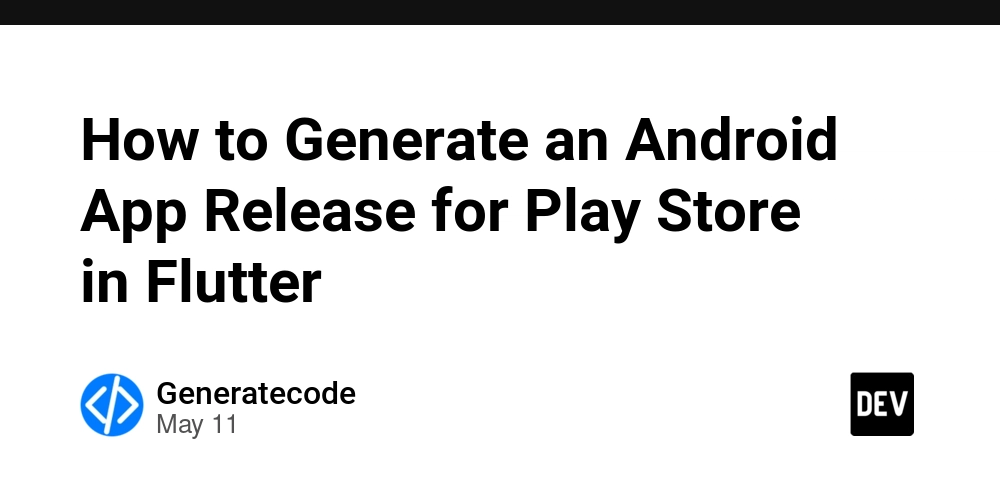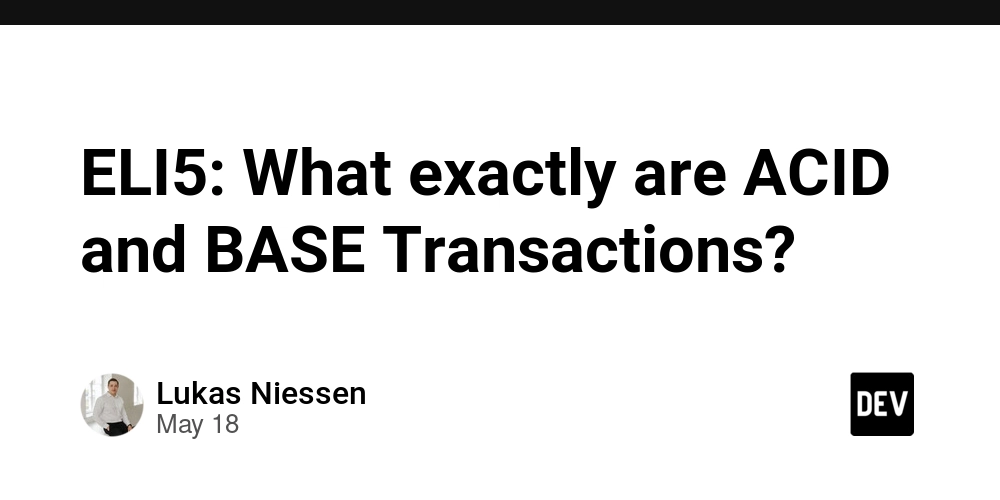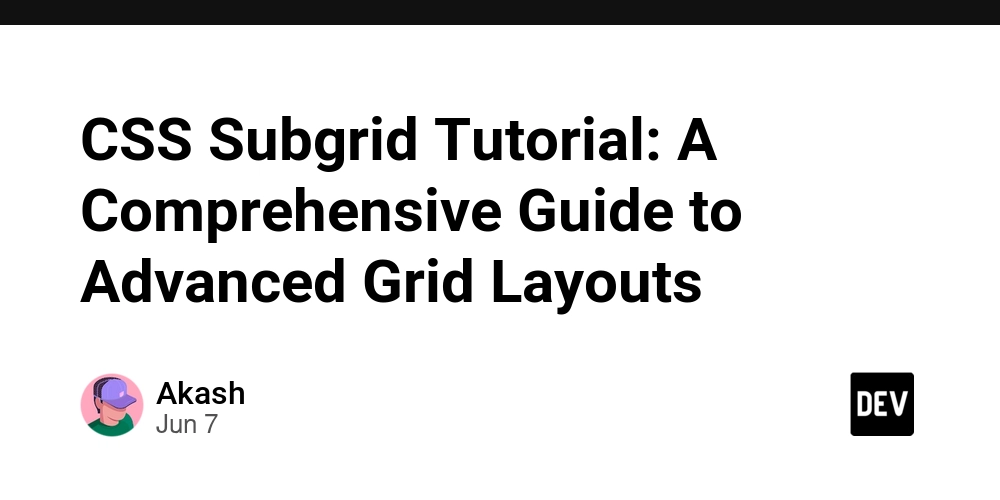How to Generate an Android App Release for Play Store in Flutter
Introduction Creating an Android app release for the Google Play Store using Flutter is a crucial step in sharing your application with users worldwide. This process involves several steps, including code signing, generating the app bundle or APK, and ensuring that your app meets all necessary criteria for submission. In this article, we will guide you through each step of creating a release version of your Flutter application, ensuring it's ready for the Play Store. Understanding Flutter Build Modes Flutter provides different build modes to cater to various needs. When submitting your app, you'll want to use the 'release' mode, which is optimized for performance and excludes debugging options. The common modes in Flutter include: Debug Mode: For development and debugging purposes. Profile Mode: For performance profiling. Release Mode: The version meant for users, containing optimized code. Why You Need a Signed App Google Play Store requires that all applications are signed with a digital certificate. Signing ensures the integrity of your app and confirms that it comes from a trusted source. If you don't sign your app, it cannot be uploaded to the Play Store. Let's go through the steps to generate a signed release. Step 1: Preparing Your Flutter App for Release Before generating your app bundle or APK, ensure your application is ready. Follow these steps: Update the pubspec.yaml: Ensure that all your dependencies are up-to-date. Remove Debug Code: Make sure to remove any debug prints or unnecessary debugging code to clean up your app. Update the App Icons: Ensure your app icon is ready and specified in the appropriate directory. Step 2: Configuring build.gradle Navigate to the android/app/build.gradle file in your Flutter project. Update the buildTypes section to prepare for signing your app: android { ... buildTypes { release { // Enables shrinking, obfuscation, and optimization for release builds. minifyEnabled true // Add ProGuard rules here, if needed generateReleaseBuildConfig = true signingConfig signingConfigs.release } } } This configuration enables code shrinking and sets up the signing configuration for release. Step 3: Creating the Keystore To sign your app, you need to create a keystore file. You can do this using the following command in your terminal: keytool -keystore yourkeystore.jks -alias your-key-alias -keyalg RSA -keysize 2048 -validity 10000 Replace yourkeystore.jks and your-key-alias with your chosen names. Follow the prompts to set passwords. Step 4: Configuring signingConfigs Next, you need to specify your keystore details in the android/app/build.gradle file. Add the following configuration inside the android block: signingConfigs { release { storeFile file('yourkeystore.jks') storePassword 'your-store-password' keyAlias 'your-key-alias' keyPassword 'your-key-password' } } Ensure that your passwords are secured and not hard-coded in production code. Use .env files or secret management solutions if needed. Step 5: Building the App After configuring the build settings and signing configurations, you can now build your app bundle or APK. For generating an Android App Bundle (AAB), which is recommended for the Play Store, use: flutter build appbundle --release If you wish to create an APK, use: flutter build apk --release This process may take a few minutes, depending on your app size and system performance. Once completed, the generated files will be located in the build/app/outputs/flutter-apk/ directory. Step 6: Testing Your Release Build Before uploading to the Play Store, it’s essential to test your release build. Use the following command to install the APK on a device: flutter install Make sure your app operates correctly without any issues or errors. Step 7: Submission to Google Play Store Create a Developer Account: Register for a Google Play Developer account. Upload the APK/AAB: Go to the Google Play Console and create a new application. Follow the prompts to upload your app bundle or APK and complete the necessary metadata and store listing. Review and Publish: Review all inputted information for correctness, then submit your app for review. Frequently Asked Questions (FAQ) What is the difference between APK and AAB? APK stands for Android Package Kit, which is the file format used to distribute and install apps on Android. AAB, or Android App Bundle, is a newer format that optimizes the app’s size by only including resources needed for the specific device, leading to more efficient downloads. How do I test my release app? You can test your release app either by using the installed APK on a physical device or by using Android emulators to simulate your app's behavior without needing an actual device. Can I update the app after publishing it? Yes, you can update your app after publishing. Simply inc

Introduction
Creating an Android app release for the Google Play Store using Flutter is a crucial step in sharing your application with users worldwide. This process involves several steps, including code signing, generating the app bundle or APK, and ensuring that your app meets all necessary criteria for submission. In this article, we will guide you through each step of creating a release version of your Flutter application, ensuring it's ready for the Play Store.
Understanding Flutter Build Modes
Flutter provides different build modes to cater to various needs. When submitting your app, you'll want to use the 'release' mode, which is optimized for performance and excludes debugging options. The common modes in Flutter include:
- Debug Mode: For development and debugging purposes.
- Profile Mode: For performance profiling.
- Release Mode: The version meant for users, containing optimized code.
Why You Need a Signed App
Google Play Store requires that all applications are signed with a digital certificate. Signing ensures the integrity of your app and confirms that it comes from a trusted source. If you don't sign your app, it cannot be uploaded to the Play Store. Let's go through the steps to generate a signed release.
Step 1: Preparing Your Flutter App for Release
Before generating your app bundle or APK, ensure your application is ready. Follow these steps:
-
Update the
pubspec.yaml: Ensure that all your dependencies are up-to-date. - Remove Debug Code: Make sure to remove any debug prints or unnecessary debugging code to clean up your app.
- Update the App Icons: Ensure your app icon is ready and specified in the appropriate directory.
Step 2: Configuring build.gradle
Navigate to the android/app/build.gradle file in your Flutter project. Update the buildTypes section to prepare for signing your app:
android {
...
buildTypes {
release {
// Enables shrinking, obfuscation, and optimization for release builds.
minifyEnabled true
// Add ProGuard rules here, if needed
generateReleaseBuildConfig = true
signingConfig signingConfigs.release
}
}
}
This configuration enables code shrinking and sets up the signing configuration for release.
Step 3: Creating the Keystore
To sign your app, you need to create a keystore file. You can do this using the following command in your terminal:
keytool -keystore yourkeystore.jks -alias your-key-alias -keyalg RSA -keysize 2048 -validity 10000
Replace yourkeystore.jks and your-key-alias with your chosen names. Follow the prompts to set passwords.
Step 4: Configuring signingConfigs
Next, you need to specify your keystore details in the android/app/build.gradle file. Add the following configuration inside the android block:
signingConfigs {
release {
storeFile file('yourkeystore.jks')
storePassword 'your-store-password'
keyAlias 'your-key-alias'
keyPassword 'your-key-password'
}
}
Ensure that your passwords are secured and not hard-coded in production code. Use .env files or secret management solutions if needed.
Step 5: Building the App
After configuring the build settings and signing configurations, you can now build your app bundle or APK. For generating an Android App Bundle (AAB), which is recommended for the Play Store, use:
flutter build appbundle --release
If you wish to create an APK, use:
flutter build apk --release
This process may take a few minutes, depending on your app size and system performance. Once completed, the generated files will be located in the build/app/outputs/flutter-apk/ directory.
Step 6: Testing Your Release Build
Before uploading to the Play Store, it’s essential to test your release build. Use the following command to install the APK on a device:
flutter install
Make sure your app operates correctly without any issues or errors.
Step 7: Submission to Google Play Store
- Create a Developer Account: Register for a Google Play Developer account.
- Upload the APK/AAB: Go to the Google Play Console and create a new application. Follow the prompts to upload your app bundle or APK and complete the necessary metadata and store listing.
- Review and Publish: Review all inputted information for correctness, then submit your app for review.
Frequently Asked Questions (FAQ)
What is the difference between APK and AAB?
APK stands for Android Package Kit, which is the file format used to distribute and install apps on Android. AAB, or Android App Bundle, is a newer format that optimizes the app’s size by only including resources needed for the specific device, leading to more efficient downloads.
How do I test my release app?
You can test your release app either by using the installed APK on a physical device or by using Android emulators to simulate your app's behavior without needing an actual device.
Can I update the app after publishing it?
Yes, you can update your app after publishing. Simply increment the version number in pubspec.yaml, repeat the build steps, and submit the new APK/AAB to the Play Store.
Conclusion
Following these steps ensures that you can generate a well-optimized Android app release from your Flutter project and successfully publish it to the Google Play Store. Remember to adhere to Google's policies and guidelines to provide the best experience for your users. Happy coding!













































































































































































![[The AI Show Episode 156]: AI Answers - Data Privacy, AI Roadmaps, Regulated Industries, Selling AI to the C-Suite & Change Management](https://www.marketingaiinstitute.com/hubfs/ep%20156%20cover.png)
![[The AI Show Episode 155]: The New Jobs AI Will Create, Amazon CEO: AI Will Cut Jobs, Your Brain on ChatGPT, Possible OpenAI-Microsoft Breakup & Veo 3 IP Issues](https://www.marketingaiinstitute.com/hubfs/ep%20155%20cover.png)




































































































































































































































































_incamerastock_Alamy.jpg?width=1280&auto=webp&quality=80&disable=upscale#)
_Brain_light_Alamy.jpg?width=1280&auto=webp&quality=80&disable=upscale#)





























































































![Senators reintroduce App Store bill to rein in ‘gatekeeper power in the app economy’ [U]](https://i0.wp.com/9to5mac.com/wp-content/uploads/sites/6/2025/06/app-store-senate.jpg?resize=1200%2C628&quality=82&strip=all&ssl=1)






















































































